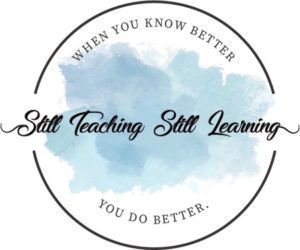
January through April is the best teaching time of the year. But sometimes it doesn’t feel like it.
After the excitement of the beginning of the year, then the fall and winter holiday breaks, we’re now in a long stretch until spring (or summer) break. If you or your students are feeling a little blah, it’s time to increase engagement with some tried-and-true strategies!
(By the way – this is part two of a two-part post. You can read part one HERE.)

David Sousa wrote one of my very favorite books: How the Brain Learns.
This book is worth an entire blog post on its own, but here are a few of his tips for student engagement:
~make learning relevant & meaningful by showing how the content is used or is related to the “real world”
~break up your lessons into smaller chunks
~incorporate novelty or the unexpected
~get students up and moving with physical activity
~add music
~use humor (funny jokes, memes, GIFs, videos)
~let students do a lot of talking
I would also add – make positive connections with your students as much as possible.

GET STUDENTS UP & MOVING
Incorporating movement into lessons is a great way to engage students in learning and to change the energy in the classroom (for the better). It can also be used for formative assessment.
Here are some tips for doing that.
*Use manipulatives during math or science instruction (allowing students to stand if needed).
*Use sorting activities where students match information such as vocabulary words with definitions, sequence events in social studies, etc.

*Have students create teaching or vocabulary word posters.
*Teach gestures for concepts or vocabulary words. Everyone does the gesture or motion every time you or your students use the word. (This is also called Total Physical Response. Here is a video that shows more.)
*Use gallery walks to look at other students’ work.
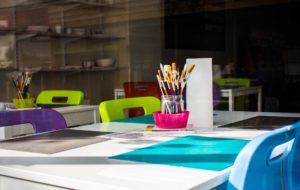
*Use nonpermanent vertical surfaces to solve math tasks in small groups.
*Incorporate learning stations in math. Or place math problem task cards at each table and allow students to move from place to place to solve the problems.
*Use measurement tools to measure objects in the classroom. This can be extended to finding the area, perimeter, or volume of objects.
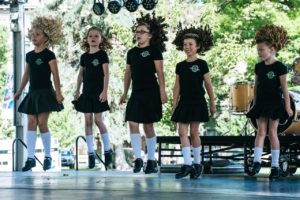
*Go outside and jump and move while doing choral counting (by fives or tens, fractional units, decimals, etc.).
*Use a soft rubber band ball to practice math facts or spelling words.
For math facts: you call out a math fact and toss the ball to a student. That student answers, calls out another math fact, and throws the ball to another student. Continue until you have practiced all of the sevens facts, nines facts, etc.
For spelling words: you call out a spelling word and toss the ball to a student. That student says the first letter of the word, then tosses the ball to another student who says the second letter, etc., until the entire word is spelled. The ball is then returned to you and the process starts over. Continue until you have practiced all of the spelling words.

*Take running or walking or other movement breaks between subjects or at appropriate transition times. (Running or walking breaks can be taken outside if you have a safe space right outside the classroom.)
*Use fitness dice for transition times.

Here are some ways to use movement for formative assessment:
*Respond to questions with physical activity such as thumbs up/thumbs down to show agreement/disagreement (or thumbs to the side if they are confused or if they can see both sides).
*When answering a multiple choice question, move to one of four corners in the classroom.
*Allow students to walk around the classroom, stop when directed, find a partner, and do a 30-second share about the lesson or explain a concept.

ADD MUSIC
You can change the energy in your classroom by using music.
Play music when your students enter the classroom, play music during independent work time, or as a movement brain break.
Josie Bensko has some great playlists on Spotify.
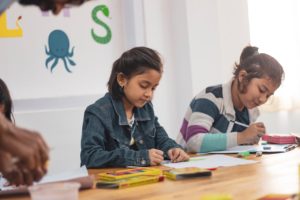
Remember how we all learned the ABC’s by singing the ABC song? Or did you learn multiplication facts and grammar from Schoolhouse Rock?
Look for ways you can teach some content through music. YouTube is your friend, but I also love Flocabulary.
(Bonus tip: build your students’ fluency skills by using closed captions!)
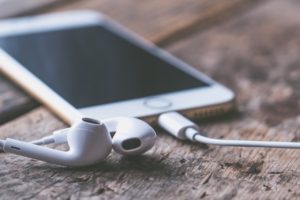
USE HUMOR
Humor is another way to engage students, add joy to your classroom environment, and help increase the ability to retain information in long-term memory.
According to this article from Edutopia, neuroscience research shows that humor activates the brain’s dopamine reward system. Dopamine is important for motivation and long-term memory.
Here are some ways to use humor in the classroom.

*Use morning meeting or circle time to tell a funny story, allow students to share funny stories, and share funny jokes or quotes. The Would You Rather Book for Kids by Stephen J. Ellis is great for this.
*Use age-appropriate funny memes and GIFs in teaching resources or student work.
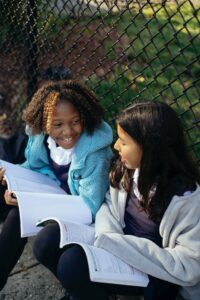
*Show age-appropriate funny videos.
*Share funny literature stories or poetry with your students. Here are some classic funny poetry books:
~Where the Sidewalk Ends by Shel Silverstein
~No More Homework! No More Tests!: Kids’ Favorite Funny School Poems by Bruce Lansky
~The New Kid on the Block by Jack Prelutsky
*At the end of the day, ask students to share something that made them laugh. (Of course, you’ll have to include appropriate caveats about not laughing at or making fun of people. These stories to share should involve something that was said or shared that made them laugh.)

LET STUDENTS DO A LOT OF THE TALKING
To incorporate novelty AND get more students talking, try these strategies.
Instead of calling on individual students . . .
*Use choral response. Provide think time first, then cue everyone to respond. This gets your whole class thinking and responding and allows you to hear who is on the right track and who is still confused. (Great formative assessment!)
*Use non-verbal choral response. “Put your finger under . . . “, “thumbs up if you agree.”
*Use partner response. “A partners, tell B partners two things we have learned about . . . “

*Use written response/quick writes. These short written responses increase accountability, focus, and thinking. You might provide a sentence starter like, “I predict that . . .” or “One important thing about ______ is . . . “
*Use whiteboards or signal cards to respond. Give think time, then say, “Show me.” Everyone holds up their board or card for you to see. (Signal cards can be made with index cards. A green circle on one side of the card might indicate “I agree” or “I can explain this.” A red circle on the other side of the card might indicate “I disagree” or “I don’t completely understand this yet.”)

*Randomly call on students (some people call it “cold calling”). However – tell your students that you’re going to do that first so it doesn’t seem like a “gotcha.” Allow them to get help from a friend if they’re stuck.
*Another alternative for randomly calling on students is to use “equity sticks.” These are popsicle sticks (or any other inexpensive tool) that are labeled with student names. There are apps to use for this if you prefer.

A great way to get students talking to is to have them give partner-to-partner affirmations. These sound silly, but they’re fun. Tell your students to turn to the person next to them and say something like, “multiplication is fun!” or “this will be the most exciting topic I’ll learn today!” or something like that. These are good for getting a little positivity going while also injecting some fun and novelty.
Provide opportunities for student interaction. Kagan Cooperative Learning structures are some of the best strategies I’ve ever used.
I hope that you found one tip that you can implement to liven up your classroom routine tomorrow. Let me know how it goes!
All of my content is intended to save teachers time and energy. Making good teaching sustainable – while also having a life outside of teaching – is my goal. Let me know how I can help YOU with this quick form!
Need more teacher encouragement? Join our Sustainable Teaching community!
